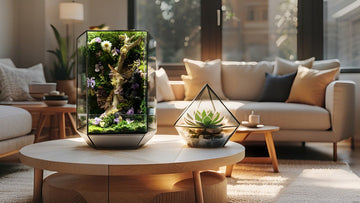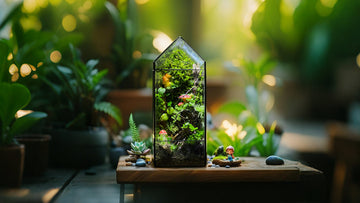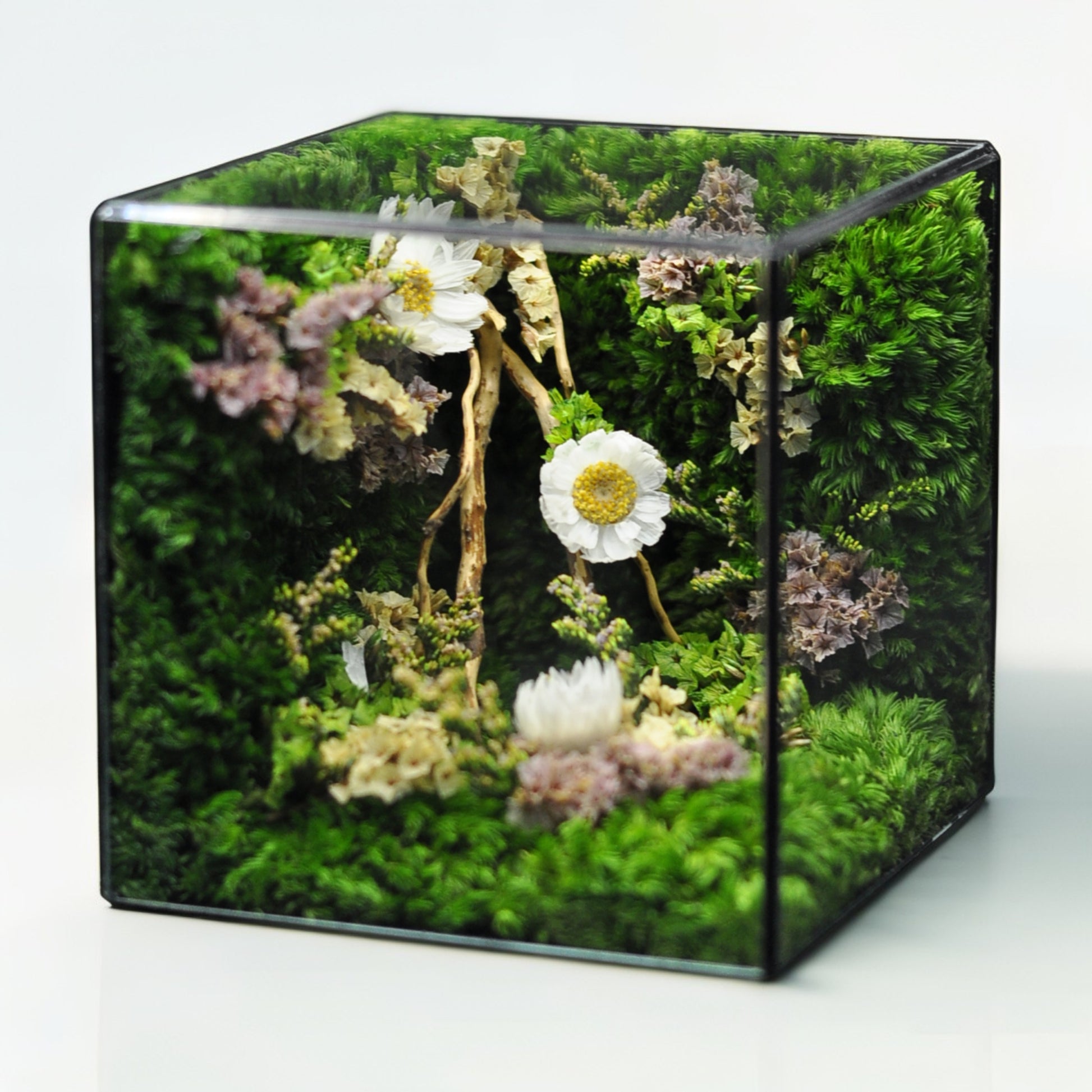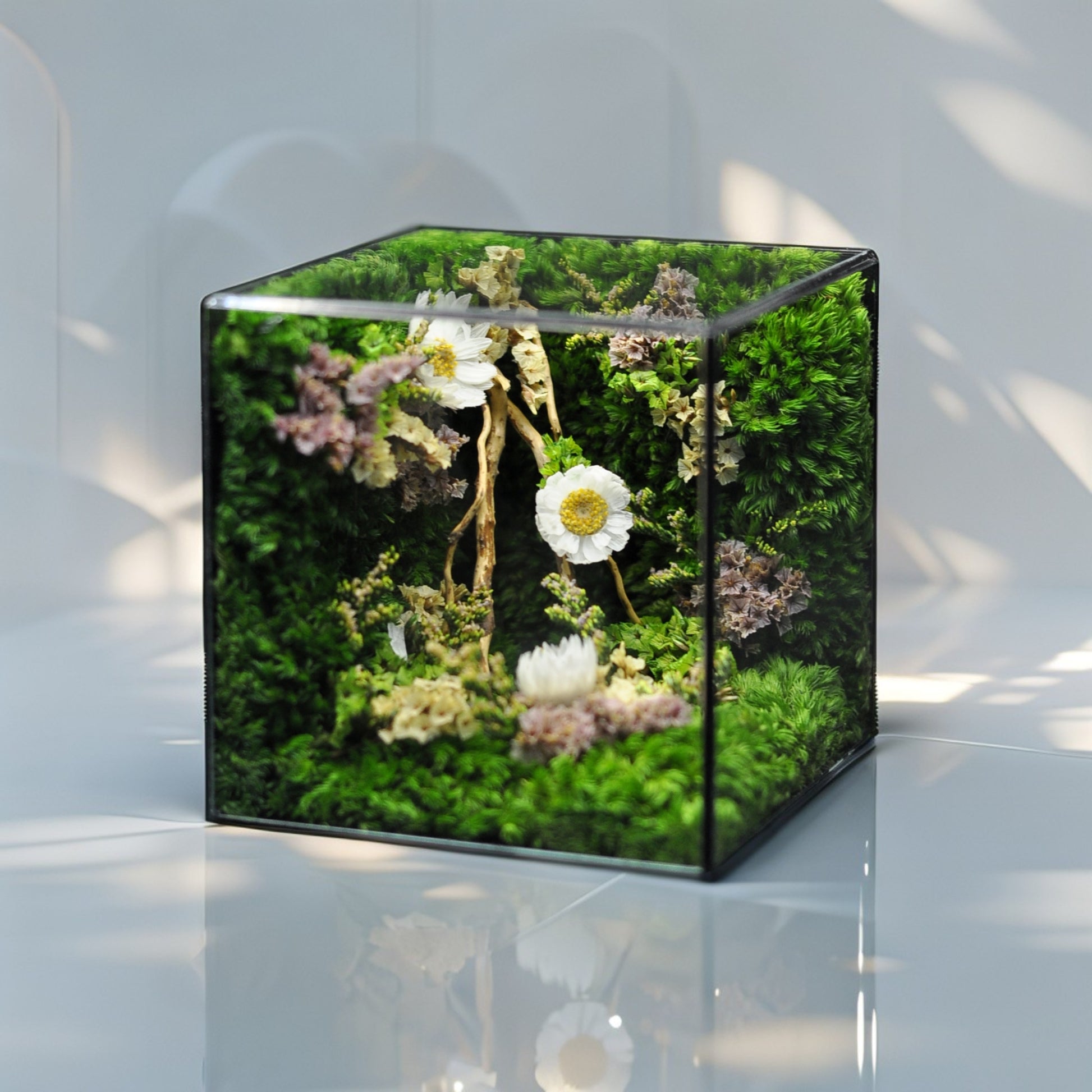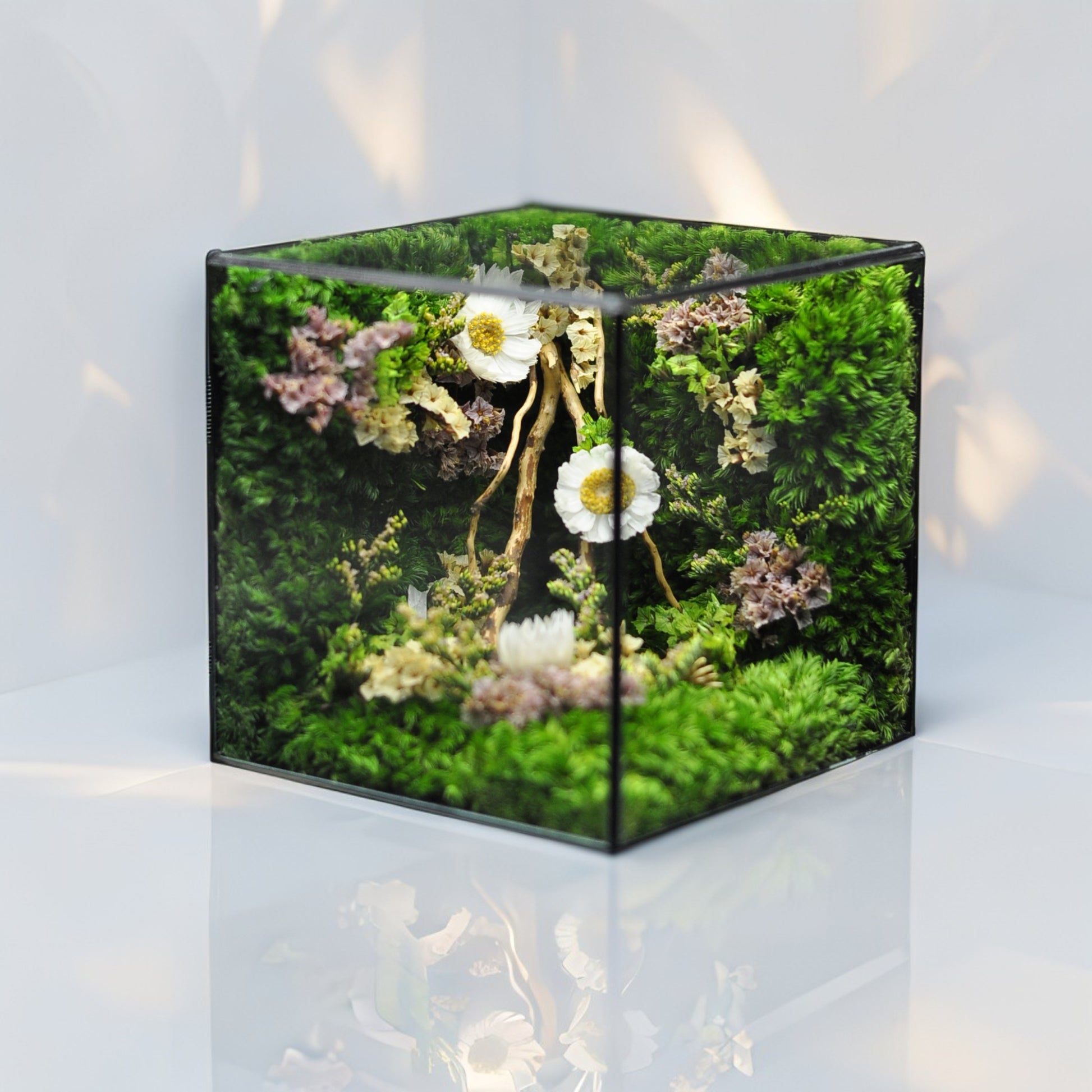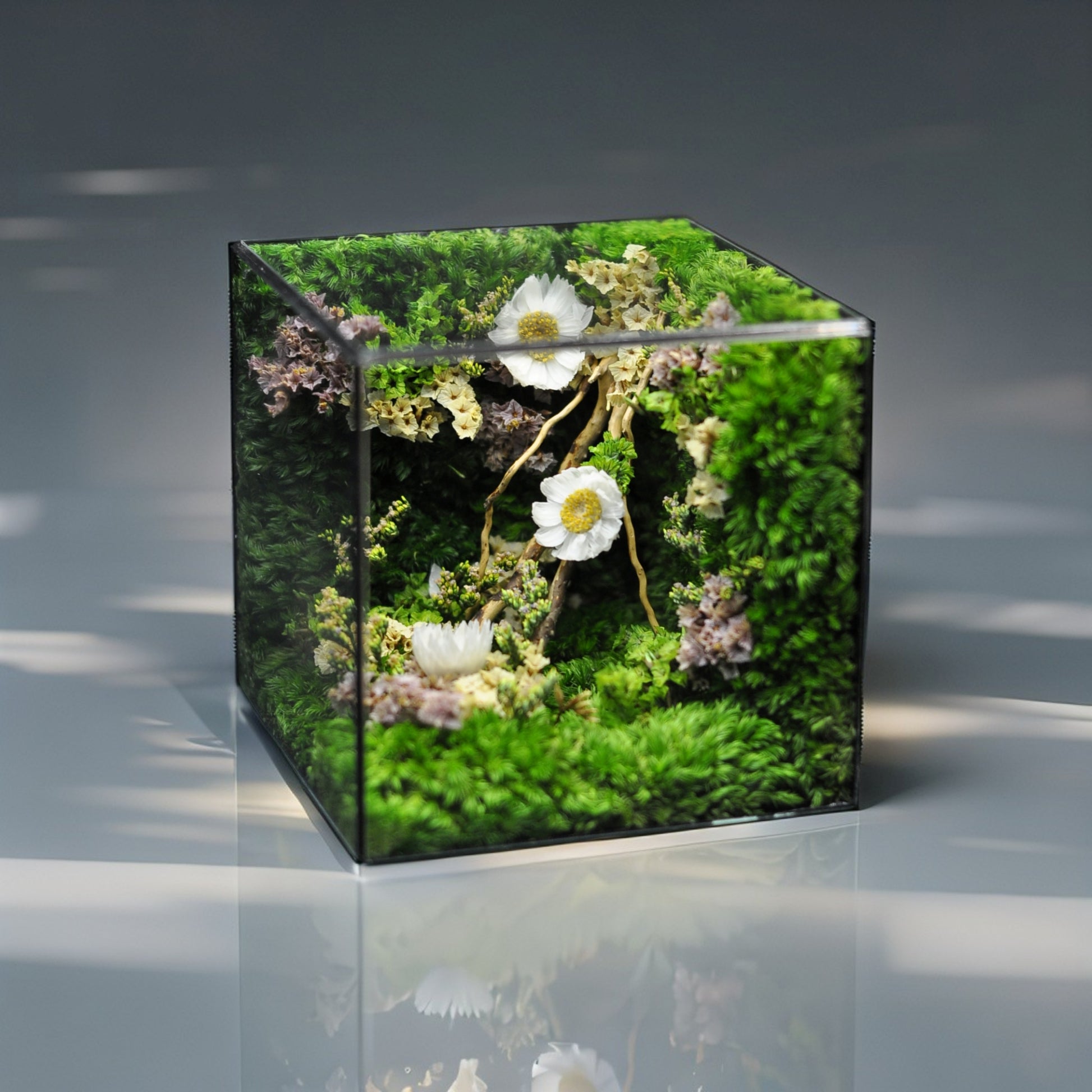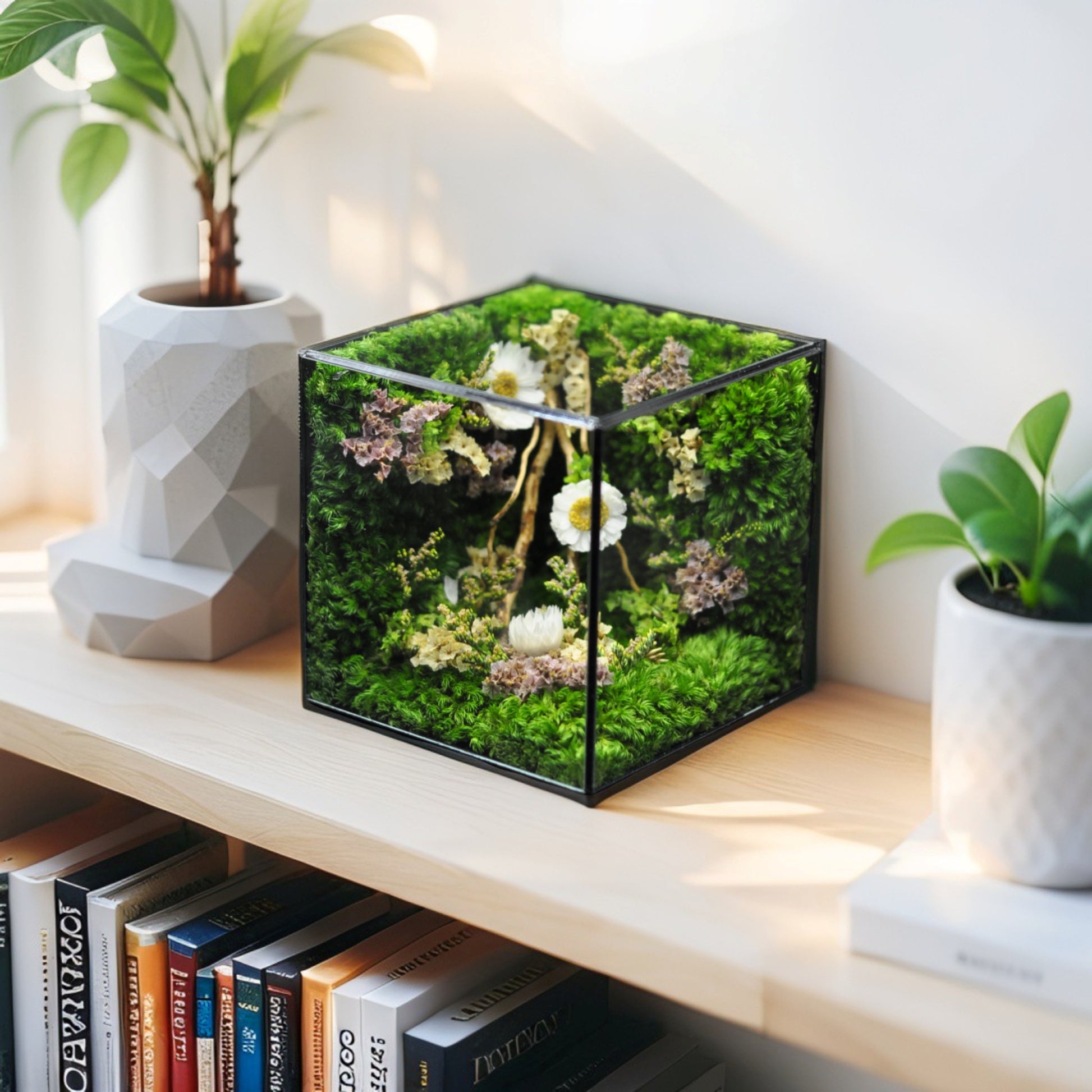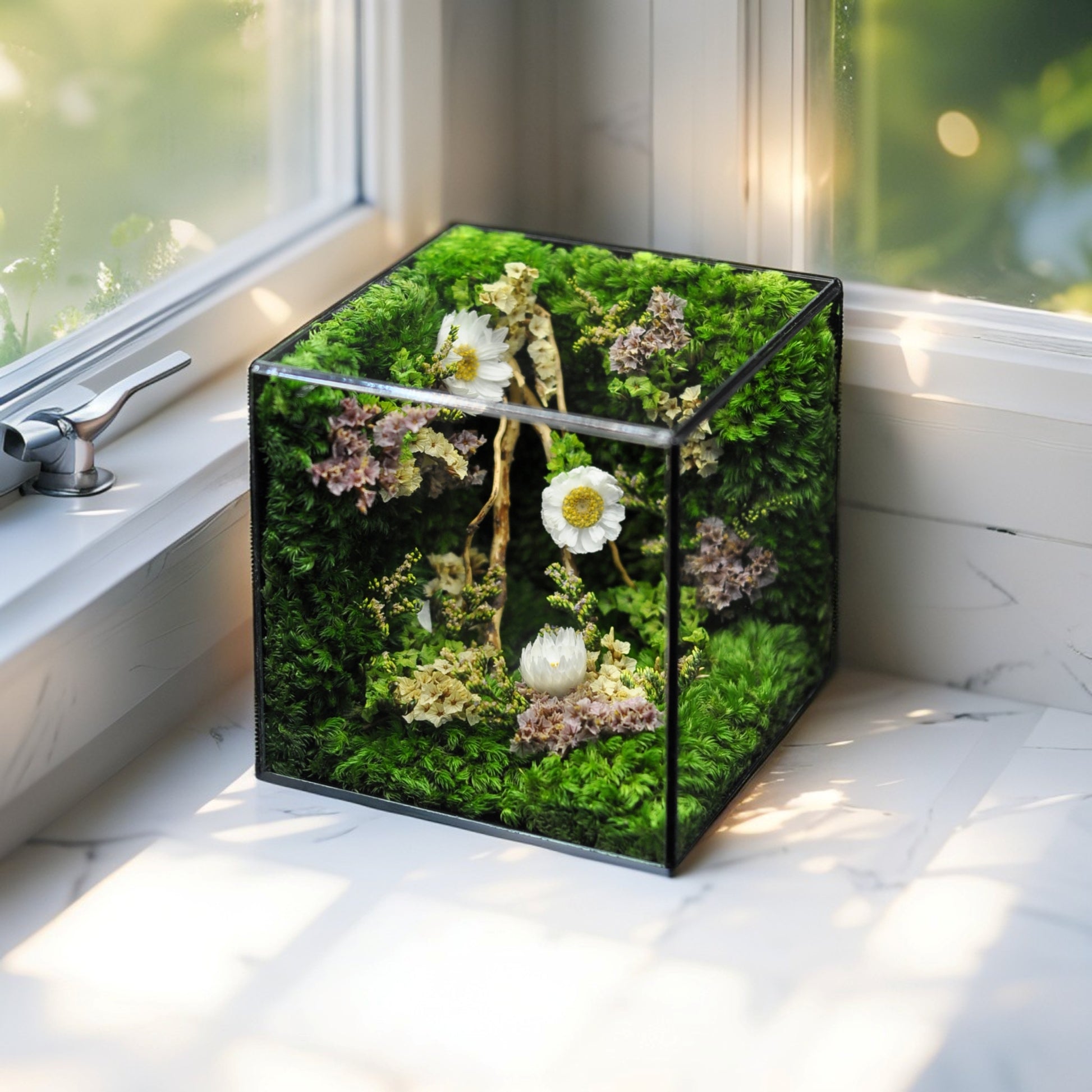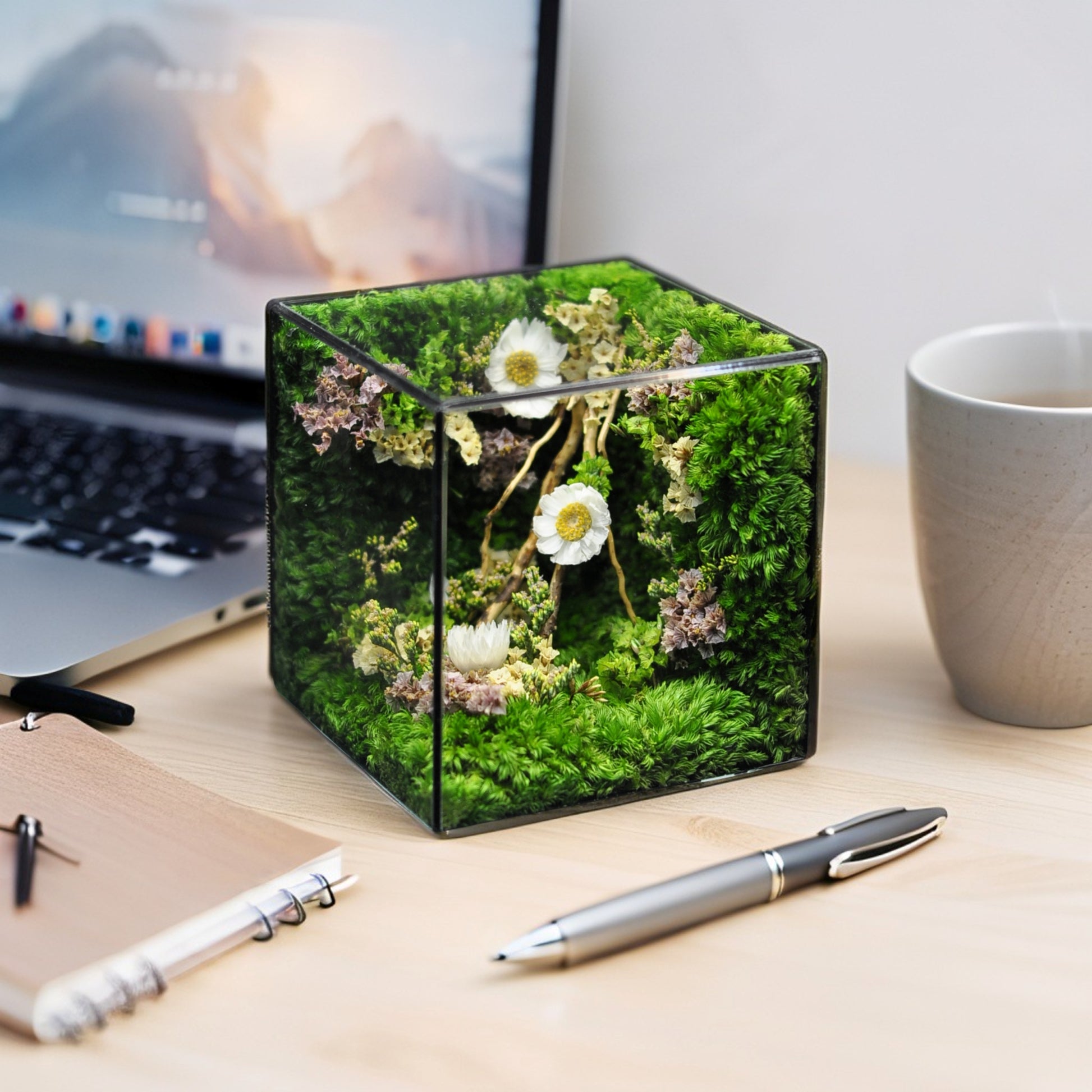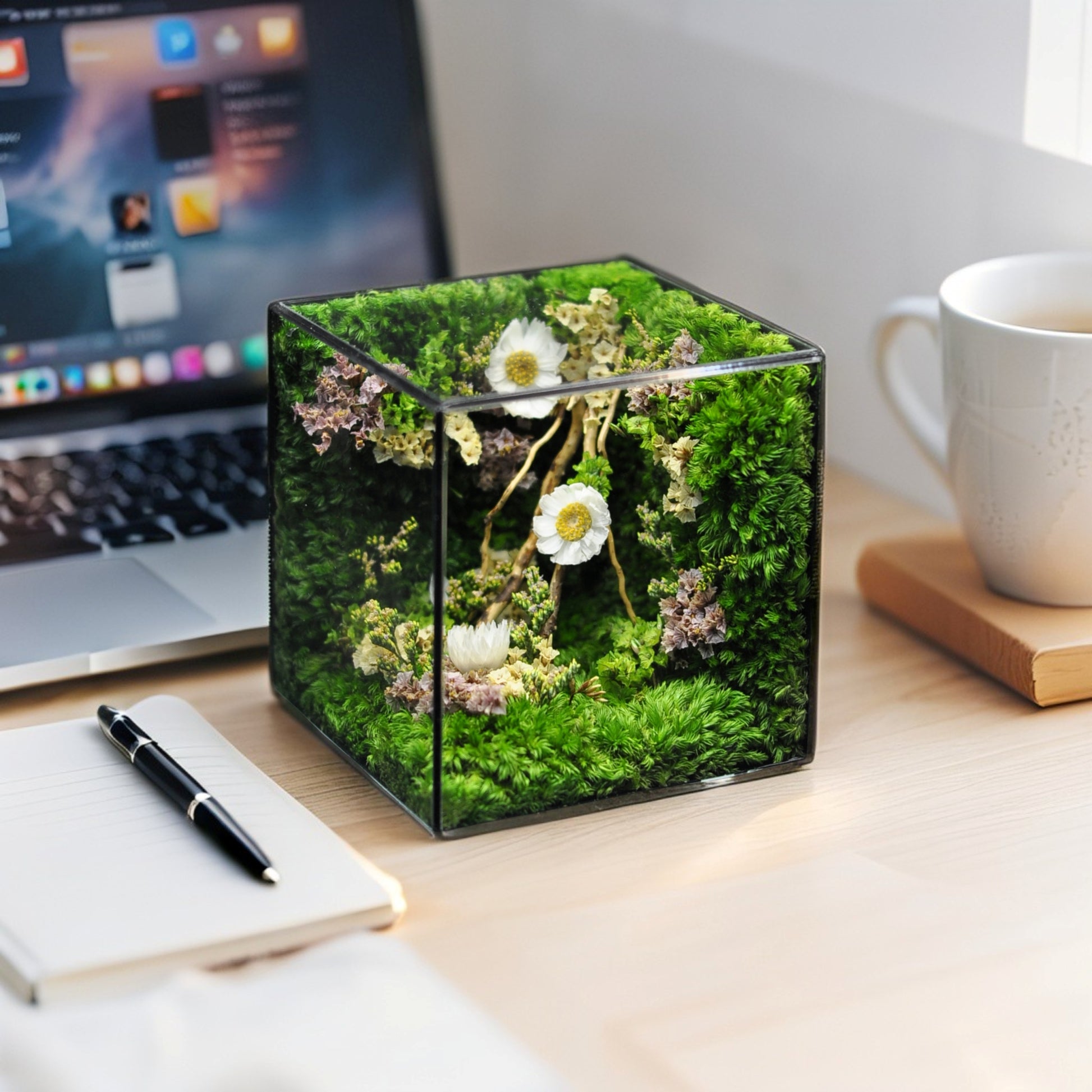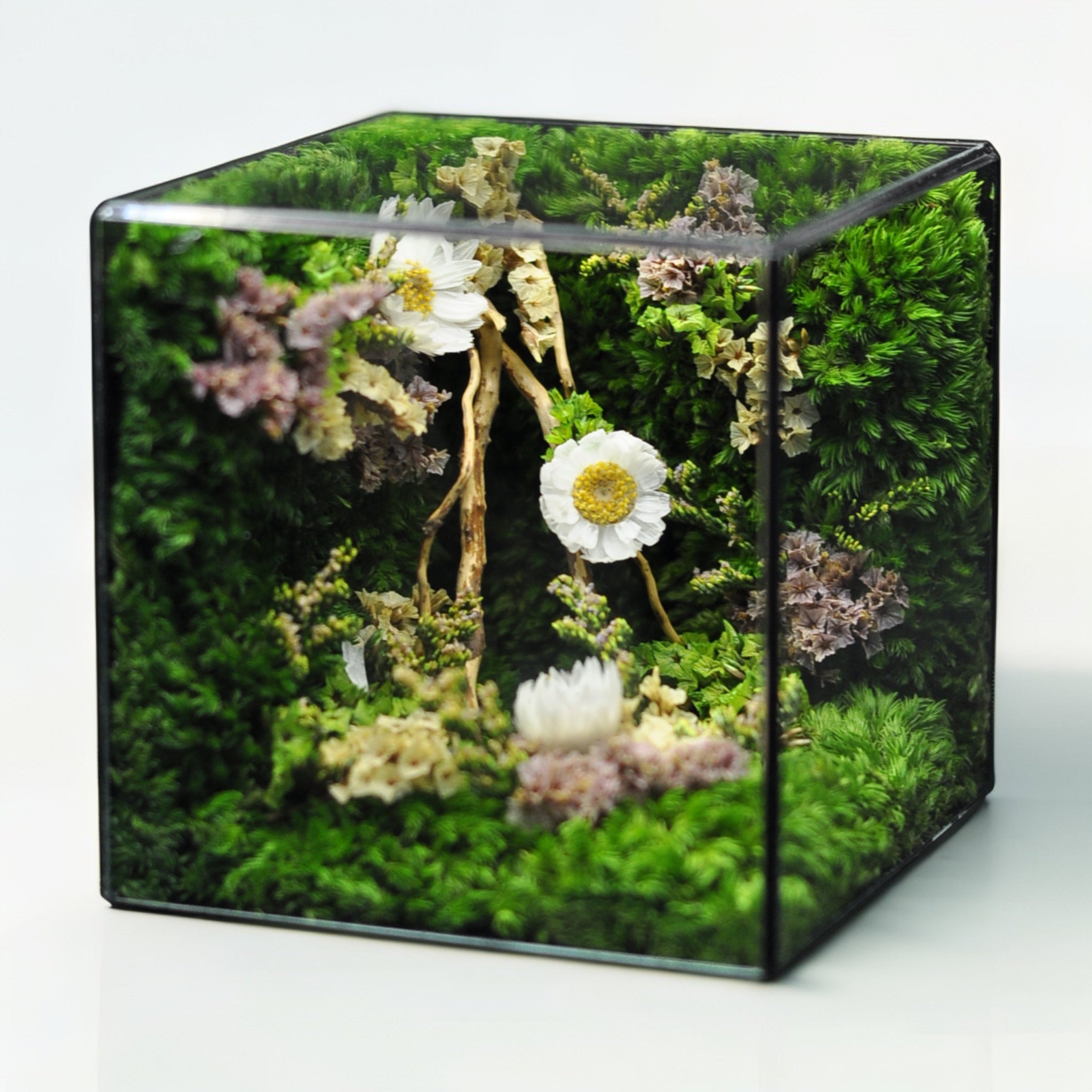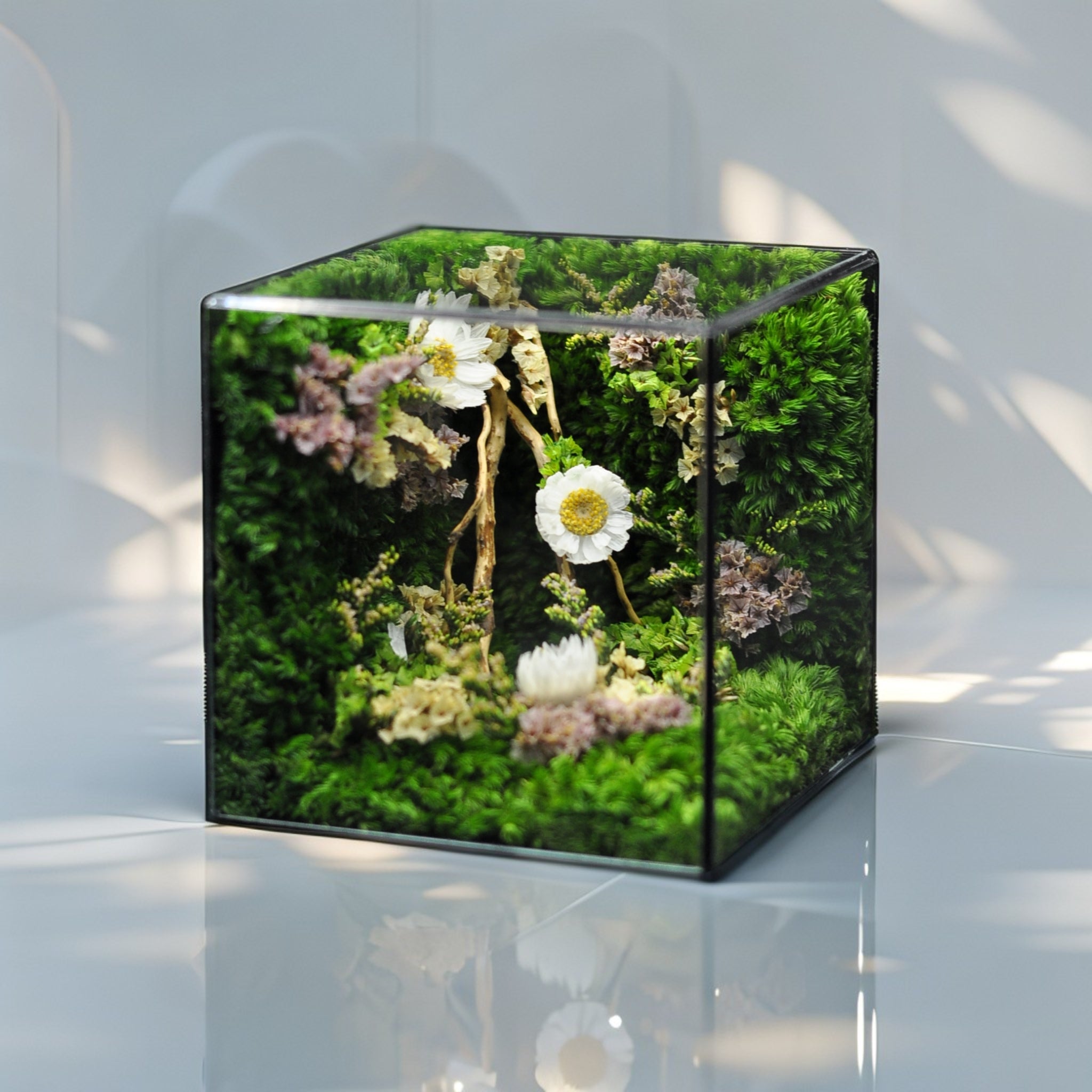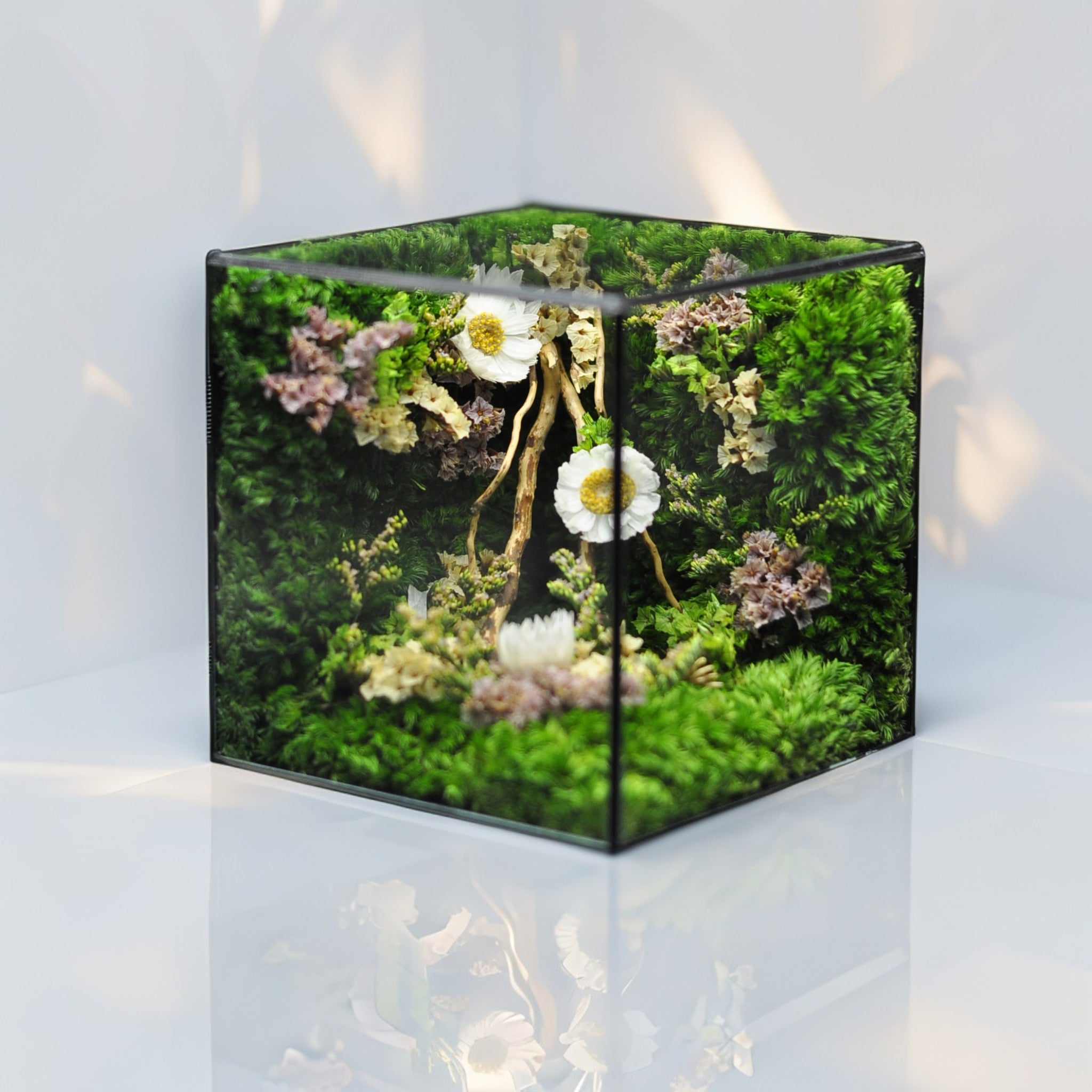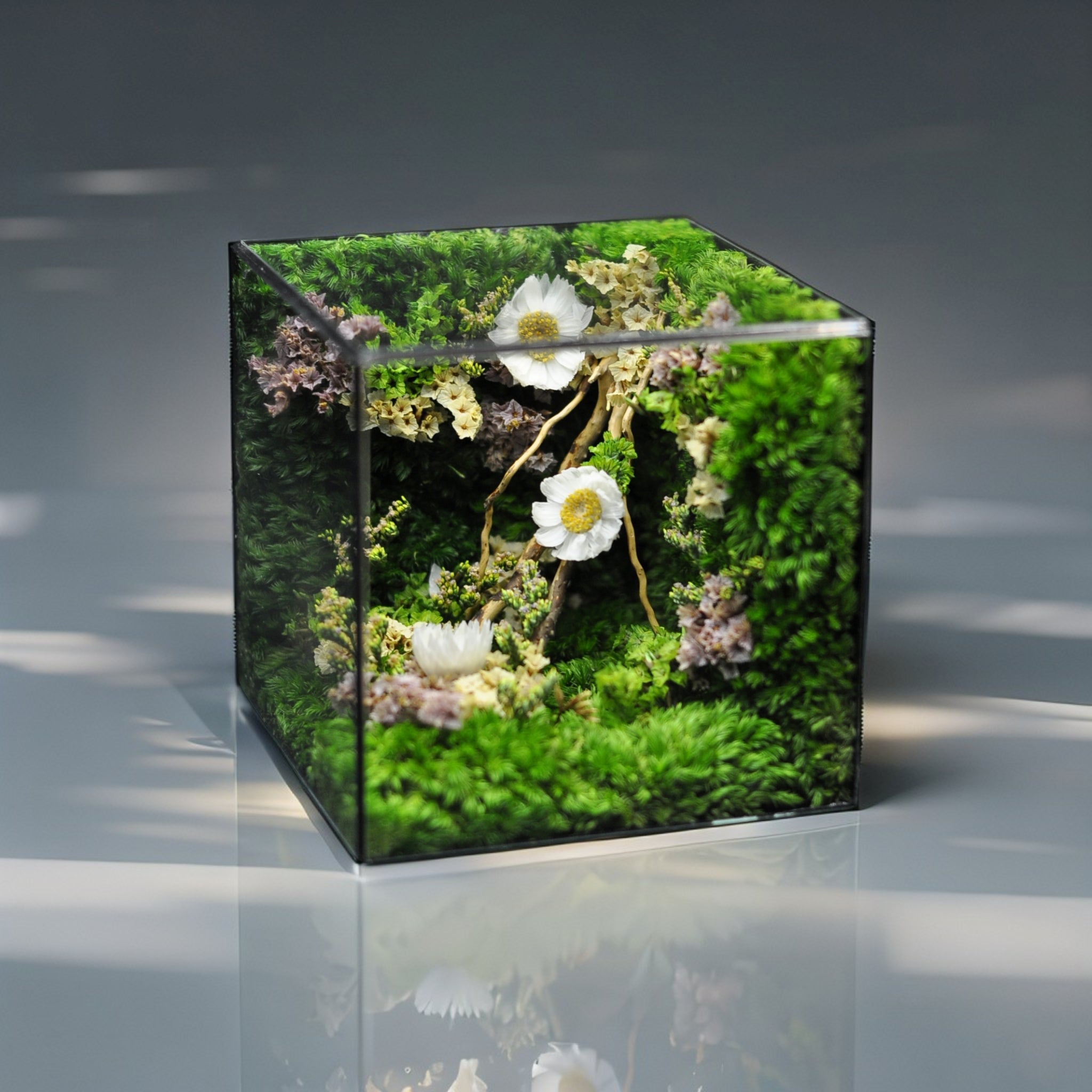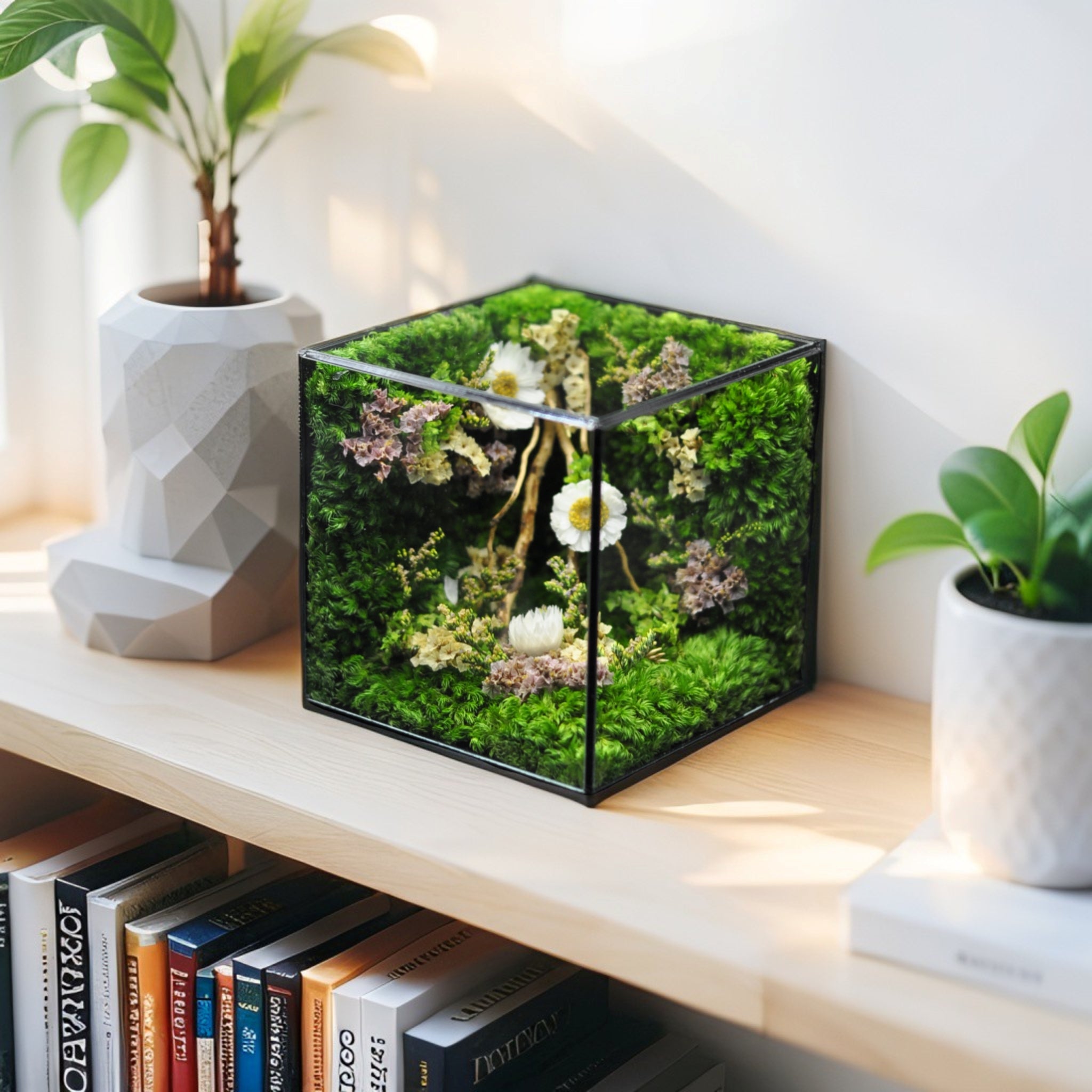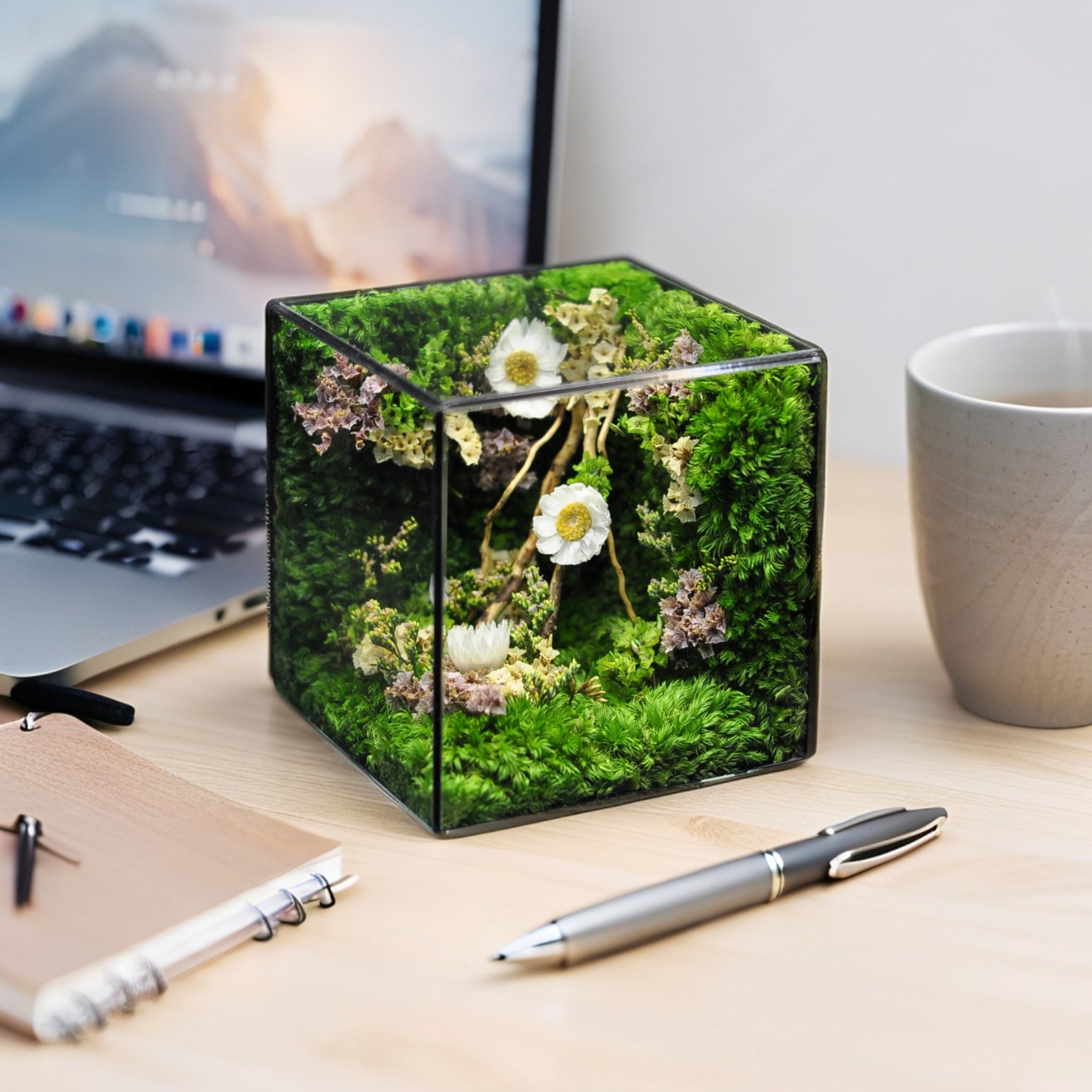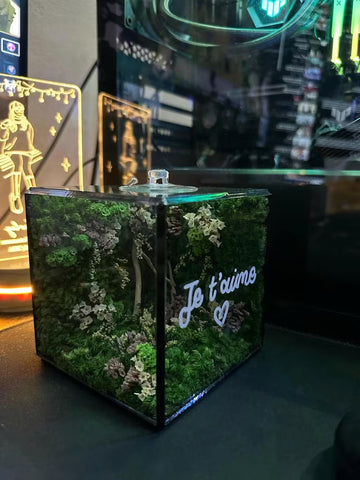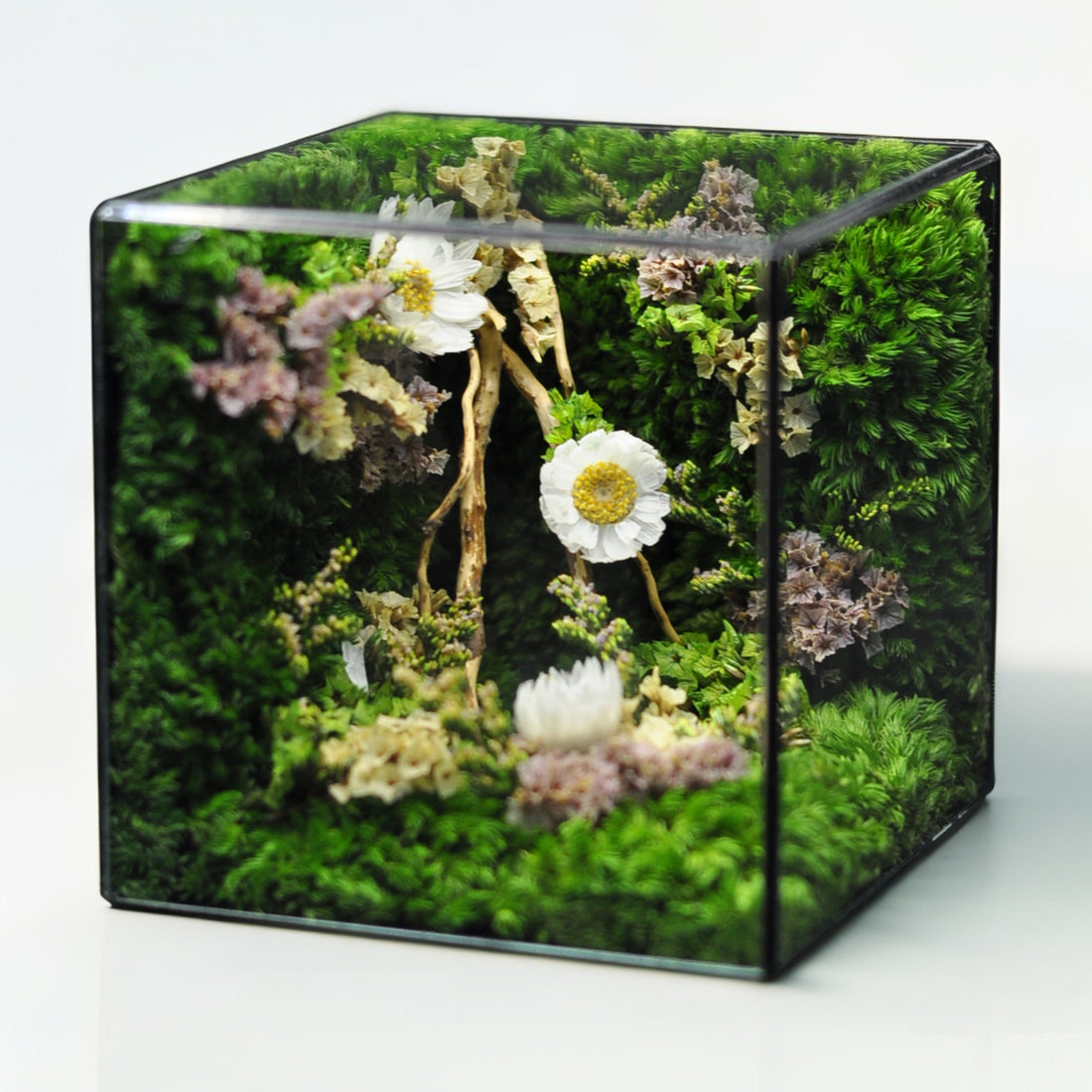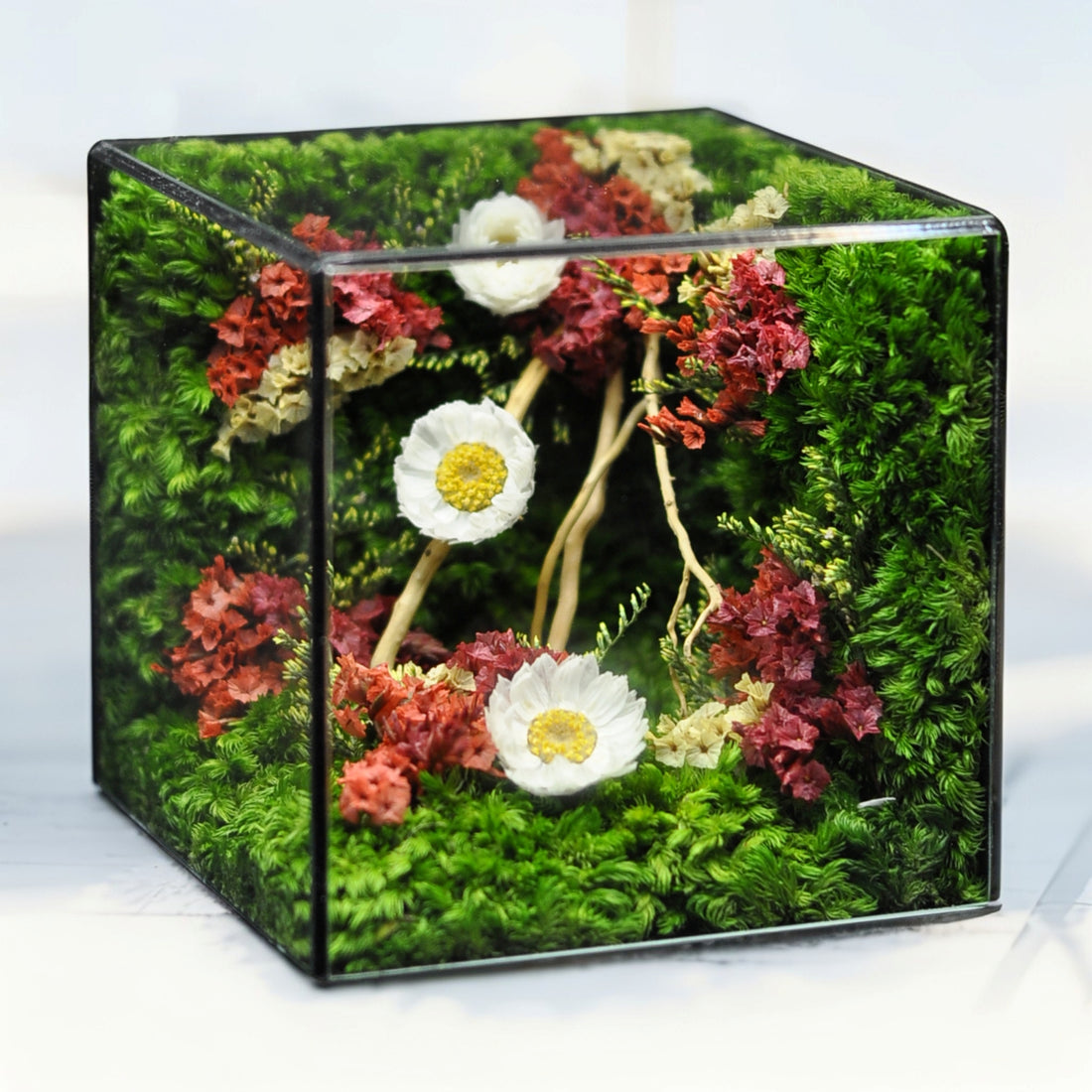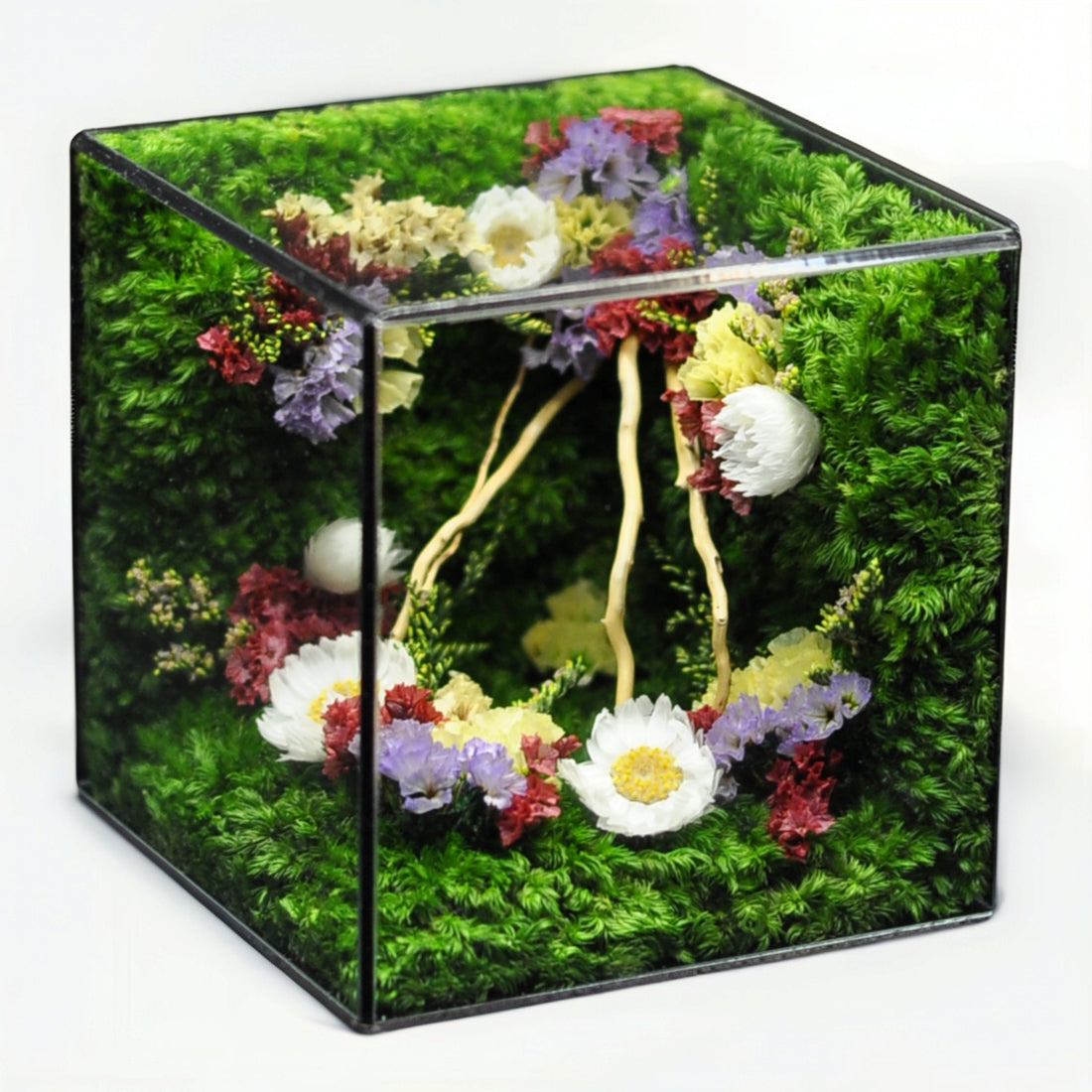Key Takeaways
Using preserved moss in a terrarium offers vibrant, low-maintenance greenery that doesn’t require regular watering, but it demands smart moisture control, thoughtful design, and ethical choices. The key takeaways below will help you understand where preserved moss excels, how to care for it, and how to integrate it sustainably into your terrarium setup.
- Match moss to terrarium environment: Preserved moss excels in open containers with controlled airflow; sealed or overly humid setups can trap moisture and degrade its texture.
- Say goodbye to constant watering: Unlike live moss, preserved varieties need no irrigation, reducing overwatering risks and eliminating daily misting chores.
- Maintain ideal humidity: Light, occasional misting keeps preserved moss flexible without saturating it, balancing moisture for optimal longevity.
- Design for harmonious coexistence: Position preserved moss away from live plant roots and high-moisture zones to prevent competition and maintain a healthy ecosystem.
- Select UV-stable moss for lasting color: Choose high-quality, colorfast preserved moss that resists fading under varied lighting for sustained vibrancy.
- Source ethically for sustainable terrariums: Opt for moss harvested under eco-friendly, fair-trade practices to support environmental stewardship and responsible sourcing.
- Build a moisture-balanced substrate: Layer drainage materials, activated charcoal, and moisture-retentive soil or sand beneath the moss to regulate humidity and inhibit mold.
- Create depth with textural combinations: Mix cushion, sheet, and reindeer moss forms to add visual interest, depth, and contrasting textures to your terrarium landscape.
With these insights in hand, you’re ready to explore the full guide on choosing the right preserved moss, setting up your substrate, and styling a sustainable, long-lasting terrarium that stays beautiful for years.
Introduction
Imagine transforming your terrarium into a lush, vibrant oasis without the constant worry of watering and maintenance. Preserved moss offers an ideal solution for creating striking scenery that not only captures attention but thrives with minimal effort. By integrating preserved moss into your terrarium, you're choosing a low-maintenance greenery that brings life to your space while eliminating the daily watering routine.
Understanding how to effectively use preserved moss is essential for maximizing its benefits and maintaining a harmonious ecosystem within your terrarium. From mastering moisture levels to ensuring ethical sourcing, this guide will equip you with practical tips and insights on successfully incorporating preserved moss. Get ready to design a captivating terrarium that stays beautiful for years, without the hassle of upkeep.
Can You Use Preserved Moss in a Terrarium? Pros and Cons
Imagine a lush pocket of green that never needs watering and stays vibrant year-round. For busy DIY terrarium enthusiasts and indoor gardeners, preserved moss offers a no-fuss way to introduce lasting texture and color to miniature landscapes.
This guide evaluates the main pros and cons of using preserved moss in terrariums, explores suitable container styles, outlines care and maintenance, discusses interactions with live plants, and shares styling tips, all while emphasizing sustainability and long-term color stability.
Benefits of Preserved Moss in Terrariums
Preserved moss delivers several advantages for low-maintenance décor:
- Vibrant, no-watering greenery: Treated with a glycerin-based solution (typically 10–30% glycerin by weight) and non-toxic dyes, preserved moss retains its lush look without irrigation, ideal for plant lovers on the go.
- UV-stable, colorfast varieties: Leading suppliers such as US Greenery and Moss Naturals test their moss to resist fading under indoor lighting and moderate UV. Expect vivid hues for 2–5 years in bright indoor conditions according to manufacturer datasheets.
- Variety of forms for textural depth:
- Cushion moss: Dense, mound-forming for sculpted hills.
- Sheet moss: Flat mats that create a forest-floor carpet.
- Reindeer moss (a lichen): Spongy, cloud-like clusters for sculptural highlights.
These aesthetic and practical benefits make preserved moss a go-to choice for many terrarium builds.
Pro Tip: Check the MSDS (Material Safety Data Sheet) to ensure the moss’s dyes and solvents are fully cured and non–off-gassing before display.
Drawbacks and Limitations
While appealing, preserved moss has some constraints:
- Static landscape: No natural growth, spreading, or self-repair—updates require manual repositioning or replacement.
- Moisture sensitivity: Without live defenses, excess humidity can foster mold growth, fiber breakdown, and color loss.
- Unsuitable for sealed, humid environments: Closed terrariums trap moisture; without adaptations (e.g., vents or periodic airing), the moss may degrade rapidly.
Open vs Closed Terrarium Suitability
Why Open Terrariums Excel for Preserved Moss
Open designs naturally balance humidity and airflow:
- Controlled airflow prevents mold and fiber decay.
- Drier conditions preserve glycerin-treated fibers’ texture and color.
- Easy access for occasional cleaning and dust removal.
Can You Use Preserved Moss in a Sealed Terrarium?
Yes—with careful adjustments. A fully sealed terrarium can host preserved moss if you:
- Install micro-vents or crack the lid weekly to release excess moisture.
- Use a hygrometer to keep relative humidity at 50–60% instead of 80%+.
- Incorporate moisture-absorbing layers, like activated charcoal and drainage material.
Mold Prevention Strategies and Ventilation Tweaks
- Lift the lid or vents for 10–15 minutes once a week.
- Layer horticultural charcoal (¼–½ inch) under the substrate to neutralize odors and absorb moisture.
- Position a small USB fan on low near the opening to maintain gentle air circulation in humid rooms.
Moisture Levels and Maintenance Guidelines
Balancing Humidity with Light Misting
Preserved moss doesn’t need watering but refreshes with light misting:
- Mist frequency:
- Every 1–2 weeks: Gentle spritz to remove dust and keep fibers supple.
- Avoid daily or heavy spraying: Large droplets pool and promote mold.
- Techniques for flexibility:
- Use a fine-mist spray bottle, no coarse streams.
- Stop when the moss feels slightly cool, not wet.
Moisture-Balanced Substrate Construction
A multi-layer base prevents waterlogging:
- Drainage layer (1–2 inches): Pebbles, perlite, or lightweight expanded clay aggregate (LECA) balls.
- Activated charcoal (½ inch): Neutralizes impurities.
- Well-draining soil or coarse sand (thin layer): Minimal moisture retention.
- Protective mesh or shallow substrate: Keeps preserved moss above direct contact with moisture.
This assembly stabilizes humidity, inhibits mold, and extends moss longevity.
Interaction with Live Plants and Ecosystem Impact
Strategic Placement for Coexistence
- Dry vs. wet zones: Position preserved moss around edges or on elevated surfaces where live soil stays drier.
- Physical separators: Use stones, driftwood, or clear acrylic rings to prevent moss fibers from intertwining with live roots.
Effects on Live Plants and Microbes
- Neutral water uptake: Preserved moss doesn’t absorb soil moisture or compete with plants.
- Monitoring humidity: Use a hygrometer to adjust misting so plant zones remain at their ideal RH.
Addressing Common Challenges
- Mold prevention: Remove discolored or slimy patches immediately; boost airflow or reduce misting frequency.
- Debris cleanup: Gently brush away fallen leaves and litter to stop decay near moss.
- Color fading: Rotate the terrarium monthly for even light exposure. If slight dulling occurs, consult your moss supplier, some offer manufacturer-approved glycerin refresh kits.
Beginner Pitfalls:
- Burying moss under overly moist substrate
- Using mist settings that produce large droplets
- Failing to isolate preserved moss from live plant watering zones
Types of Preserved Moss for Terrariums
Best Moss Varieties for Terrarium Use
- Cushion moss: Robust mounds for sculptural topography.
- Sheet moss: Broad groundcover for immersive landscapes.
- Reindeer moss: Airy clusters for three-dimensional contrast.
Selecting UV-Stable, Colorfast Options
- Quality indicators:
- Supplier-provided fade-resistance data or before/after photos over 6–12 months.
- UV-stable or colorfast labels verified by third-party tests.
- Expected lifespan: Durable preserved moss can retain >90% of its original hue for 2–5 years under bright indoor or LED grow lights.
Designing and Styling Tips for Aesthetic Appeal
Creating Textural Depth and Contrast
- Mix moss forms: cushion “hills,” sheet “plains,” reindeer “islands.”
- Add height variation: place thin stones or foam under reindeer moss for elevation.
Color and Layout Harmony
- Pair static greens with bright succulents or air plants in open terrariums.
- Incorporate colorful pebbles, driftwood, or small blooms as focal accents.
Ethical Sourcing and Sustainability
Choosing Eco-Friendly, Fair-Trade Moss
- Look for FSC-certified or equivalent labels ensuring responsible harvest.
- Support suppliers practicing traceable, low-impact preservation.
Supplier Credentials and Trust Indicators
- Verify audit trails: harvest dates, origin, and processing methods.
- Opt for brands using recycled or biodegradable packaging.
Case Studies and Expert Tips
Long-Lasting Preserved Moss Terrarium Showcase
Project: GreenScape Designs’ “Evergreen Oasis”
- Setup: 12-inch open glass bowl with cushion and reindeer moss plus succulents.
- Maintenance: Light mist every 10 days; bi-weekly debris checks; monthly 90° rotation.
- Outcome: After 18 months, moss retained 95% of its original color and texture, with zero mold incidents.
Sealed Terrarium Example: Mossy Microcosm
Setup: 8-inch sealed bulb vase with sheet moss and air plants separated by acrylic rings.
- Maintenance: Lid lifting for 15 minutes weekly; activated charcoal layer; humidity maintained at 55%.
- Outcome: Over 12 months, the moss remained vibrant with no mold, demonstrating sealed viability with proper ventilation.
Pro Tips from Terrarium Experts
- Substrate hack: Add a thin sand layer between soil and moss to limit capillary moisture transfer.
- Micro-habitats: Use clear acrylic rings or small ceramic dishes to isolate preserved moss patches.
- Airflow control: Position a small desk or USB fan on low for gentle circulation.
Frequently Asked Questions
Can you use preserved moss in a closed terrarium?
Yes—add micro-vents or lift the lid weekly, use activated charcoal under the substrate, and monitor RH at 50–60%.
How often do you need to mist preserved moss in a terrarium?
Lightly mist every 1–2 weeks with a fine-spray bottle; avoid heavy droplets to prevent mold.
What are the best types of preserved moss for terrariums?
Cushion moss for sculptural forms, sheet moss for carpet coverage, and reindeer moss for three-dimensional texture.
Does preserved moss need watering vs live moss?
No—preserved moss doesn’t absorb water for growth. Misting is only for cleaning and maintaining flexibility.
Will preserved moss harm live plants in a terrarium?
No—preserved moss doesn’t compete for moisture or nutrients. Just coordinate misting and humidity to suit both moss and plants.
Does preserved moss need a glycerin refresh over time?
Generally, no. Most quality preserved moss retains its texture for years, but consult your supplier—some offer approved glycerin refresh kits.
Will preserved moss harm plastic or glass enclosures over time?
High-quality preserved moss is treated to be non-corrosive and safe for most glass or plastic vessels. Always check the supplier’s MSDS to confirm material compatibility.
Ready to build your no-water mossscape? Grab your favorite glass vessel and let’s go!
Conclusion
Using preserved moss in terrariums offers numerous benefits, such as vibrant, no-maintenance greenery that adds instant texture and color to your living spaces. As illustrated throughout the guide, its long-lasting, UV-stable properties make it a low-effort solution for creating beautiful indoor landscapes. However, understanding its limitations, like moisture sensitivity and the absence of growth, guides successful terrarium setup.
The insights on balancing humidity, selecting suitable environments, and implementing strategic maintenance practices ensure a harmonious coexistence with live plants while maximizing the aesthetic appeal of your terrarium. Sustainability is paramount; choosing responsibly sourced moss not only fosters creativity but supports eco-friendly practices within the gardening community.
By approaching your preserved moss project with the tips shared here, you’re well-equipped to cultivate a thriving, vibrant ecosystem that endures. What will your unique moss-scape look like? Dive into your terrarium journey and enjoy the beauty of nature, effortlessly preserved.
Frequently Asked Questions (FAQ)
Q: Can you use preserved moss in a closed terrarium?
A: Yes—with micro-vents or by lifting the lid weekly to release excess moisture, layering activated charcoal under the substrate, and maintaining relative humidity at 50–60% with a hygrometer.
Q: How often do you need to mist preserved moss in a terrarium?
A: Lightly mist every 1–2 weeks with a fine-spray bottle, stopping when the moss feels slightly cool, to remove dust and keep fibers supple without pooling water.
Q: What are the best types of preserved moss for terrariums?
A: Cushion moss for dense, mound-forming hills; sheet moss for flat, forest-floor coverage; and reindeer moss for spongy, three-dimensional clusters.
Q: Does preserved moss need watering in a terrarium?
A: No—preserved moss doesn’t require irrigation for growth. Misting is only for cleaning and maintaining its texture.
Q: Will preserved moss harm live plants in a terrarium?
A: No—preserved moss doesn’t compete for moisture or nutrients. Use physical separators (stones, driftwood, acrylic rings) and adjust humidity to suit both moss and plants.
Q: How can you prevent mold growth when using preserved moss in a terrarium?
A: Open vents or lift the lid for 10–15 minutes weekly, layer ¼–½ inch of horticultural charcoal under the substrate to absorb moisture, and ensure gentle airflow (e.g., a low-speed USB fan).



